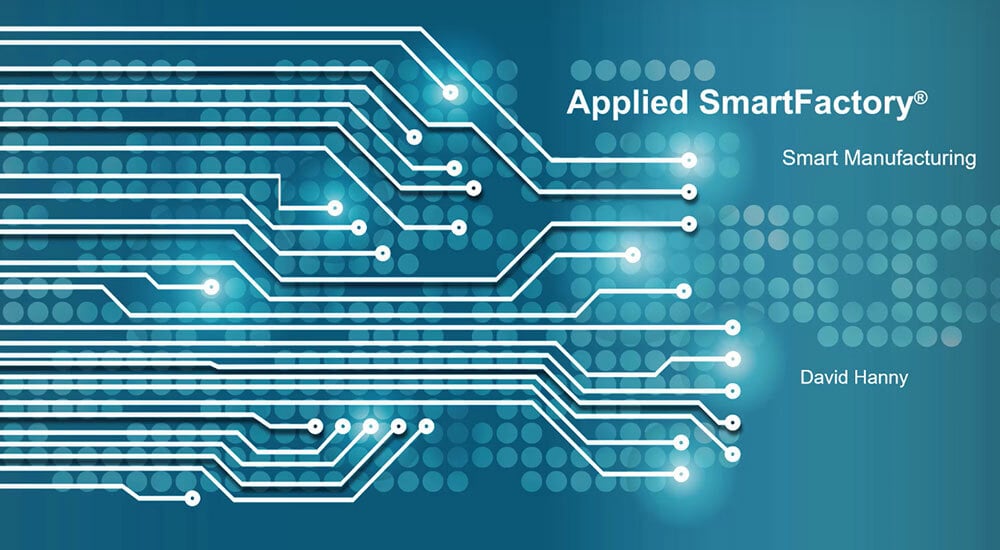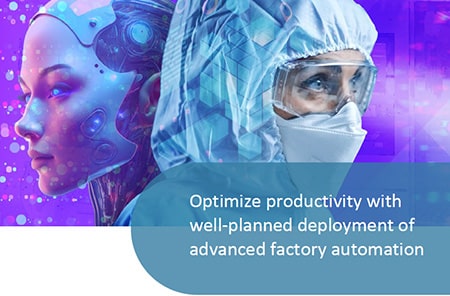Transcript
Thanks for joining today. In a few minutes we’re going to talk about a topic that might take an hour or two, but it’s about Industry 4.0. It’s important on the top to understand Industry 4.0 is not a destination. It is something that enables you to move to the destination that you would like in your Smart Manufacturing endeavors.
What is Smart Manufacturing? We define it in two ways. The striving for zero defects and the optimal asset utilization, trying to get the most out of what you have. We believe that it’s these two things that help you to be able to drive the highest quality in your factory and create the most profit from your operations.
Let’s look at these individually for just a moment. Defects are measured in a defect in each part per million. It has the direct relationship to the process quality capability that you have.
The level of automation enables you to move forward. Today, largely, many of the analysis are done offline. To take a step forward we need to be able to do something faster than a human can do it.
And as we start to learn and be able to create trend analysis, we can understand what is going on relative to that particular operation and how we can take it to the AI to drive end-to-end quality for the striving for zero defects. Let’s take a look at the asset optimization. There are many assets in your factory that include equipment.
It includes people, your products, the things that flow in and out of your factory. The success of most of these are measured in two main ways. What is the cycle time of the product in the factory and what is the output that you can drive.
As you drive this curve to the lower and to the right, you’re getting more out of what your factory has. Let’s start with a real-world example. Many of you have probably had the chance to sit in an automated vehicle that guides itself.
I know the first time I sat in one and let go of the steering wheel, I was a little bit nervous to see what was going to happen. It’s critical that your systems operate in real time, interpret the data, make decisions, they know about the road, they know about what’s off of the road and those boundaries. And what you want to avoid is something bad happening here, right? The software system is taking control of this vehicle.
The thing that is critical for success here is the speed of decisions. When something is recognized, when an event occurs, to be able to reduce that time between that event and the decision. That requires an integrated set of data and a warehouse of knowledge that allows applications to be able to operate intelligently.
To be successful in automated driving or manufacturing, there’s two limitations that have to be overcome. The first of those is the maturity of the technology and the second one is how do I share that information? How do I integrate that data? I want to take a minute and talk about both of those. The Society of Automotive Engineering defined six levels of automation and they transition from no automation to full automation.
This is directly the same as what we see in manufacturing. That we can move from no automation, where we’re moving things with paper, we start the tools by ourselves and we start to get systems that help us, that the human is operating, to on the blue side here is system initiated operation. Well this is where we get stuck a little bit and we need some new technologies to allow us to be able to move faster.
We can’t crunch data fast enough, we can’t store enough, we can’t share it fast enough. The visualization of it is a challenge and so new technologies are required to be able to take these steps forward. In the state of level three, the initial state of what one would call full automation, this is really a proving ground.
There’s still individual techniques that are non-integrated that are proving themselves out with these new technologies. Going forward, when those start to be integrated, now we’re able to leverage the trending data, the machine learning, to be able to apply artificial intelligence, make decisions that maybe we haven’t encountered before. And this is in a controlled environment.
Level five gets us to any environment. This is where the weakest part of your entire system is going to be stressed. Let’s take a look next at what we call the intelligence maturity.
Today, most manufacturing is largely sensory. There’s signals that come along, decisions that are made. These solve a local problem.
They’re passive and prevalent. Fault detection on maybe a piece of equipment. How do I handle recipes? How do I deal with the equipment and handle bad signals as they come across? These are all sensory manufacturing techniques.
Stepping forward is peripheral intelligence. This is where sharing begins. We extend the information from one step up and one step down.
You’re solving together someone else’s problem. You start to get into more things like dispatching based on other criteria. You start to get into advanced process control.
The next move up we call interdependent intelligence. This is where multiple systems are solving a common problem together. This is where trending information starts to come.
It’s an environment of learning. As you leverage that learning and apply logic to it, you start to get to the area of probabilistic intelligence. This is where AI comes in.
You’re able to prescribe things that are going to happen at a high level of probability. The machine and the process are able to act on the learning. And then finally, as we step up to interpretive intelligence, this is when we have become so experienced and the data is so well populated that we can handle new conditions that we have never had before.
That allows you to strive towards the goal of zero defects. Hopefully this was useful for you. Our moniker is we think that intelligence is designed.
It’s not something that happens by chance. You need a strategy to be able to get there.

